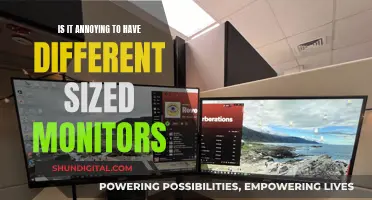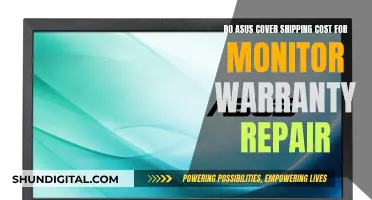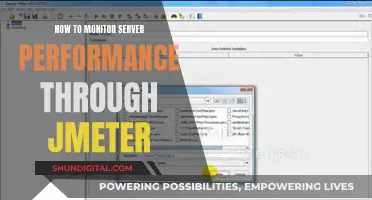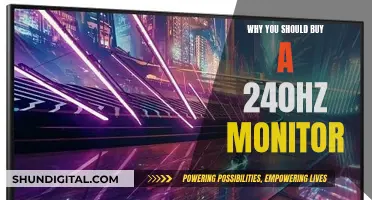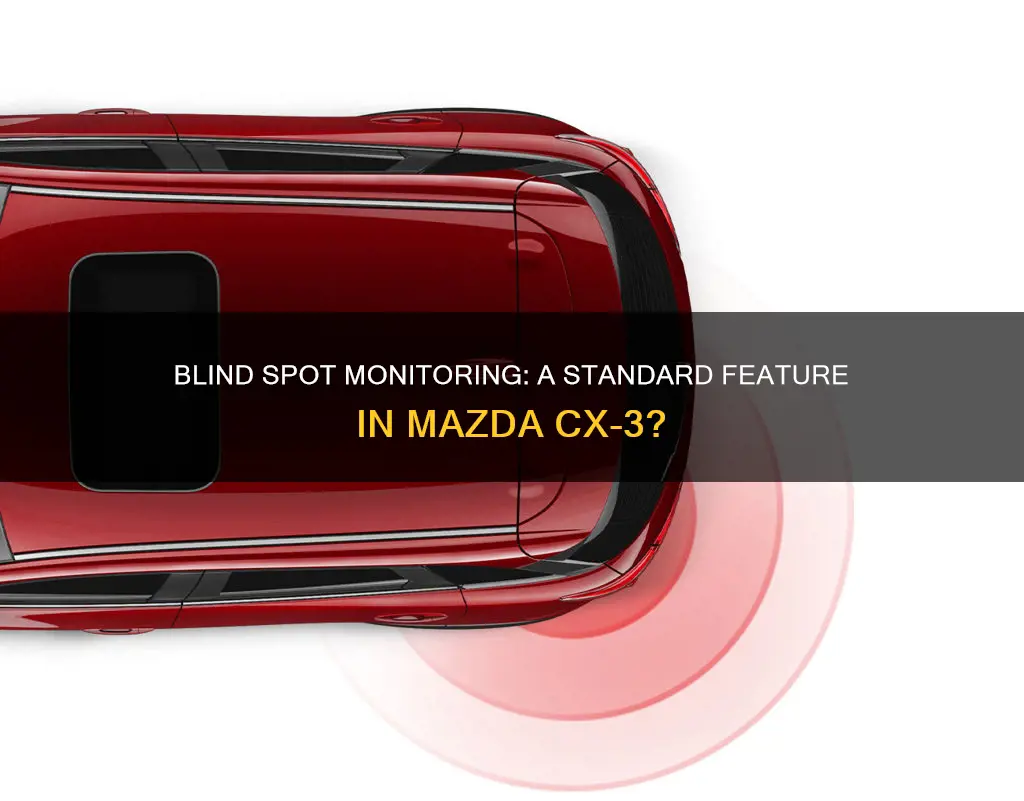
Mazda's Blind Spot Monitoring (BSM) system is an active safety technology designed to assist drivers in checking their blind spots and help with lane changes. The BSM system uses radars mounted in the rear bumper to detect vehicles approaching from behind and in adjacent lanes. When a vehicle is detected, the BSM system alerts the driver by displaying an icon in the appropriate door mirror. If a driver indicates a lane change while a vehicle is in their blind spot, the BSM system will flash the icon and sound a warning beep. The system covers the driving lanes on both sides of the vehicle and up to 50m (164 ft) behind the vehicle. The BSM system is available on some models of the Mazda CX-3, including the 2016 and 2017 versions.
| Characteristics | Values |
|---|---|
| Blind Spot Monitoring (BSM) | Uses radars mounted in the rear bumper to detect vehicles approaching from behind and in adjacent lanes |
| How it alerts the driver | Displays an icon in the appropriate door mirror, flashes the icon, and sounds a warning beep |
| When it alerts the driver | When the driver indicates to change lanes while a vehicle is in their blind spot |
| When it operates | When the ignition is switched on, the BSM OFF indicator light is off, and the vehicle speed is 30 km/h (19 mph) or faster |
| When it does not operate | When the vehicle speed falls below 25 km/h (15 mph), the vehicle is reversing, the turning radius is small, or there is a problem with the system |
| Limitations | May not detect vehicles in certain conditions, such as when a vehicle is driving alongside at a similar speed or when there is a large deviation in the installation position of a radar sensor |
What You'll Learn

How does Mazda's Blind Spot Monitoring system work?
Mazda's Blind Spot Monitoring (BSM) system uses real radar to monitor areas on both sides of the vehicle to the rear when the vehicle speed is about 19 mph or greater. The system is designed to assist the driver in checking the area to the rear of the vehicle on both sides during lane changes by notifying the driver of the presence of vehicles approaching from the rear in an adjacent lane. The BSM detects vehicles approaching from the rear while travelling in the forward direction at a speed of 19 mph or faster and notifies the driver by turning on the BSM warning indicator light and displaying the vehicle detection screen. The detection area on this system covers the driving lanes on both sides of the vehicle and from the rear part of the front doors to about 164 ft behind the vehicle.
The BSM system will notify the driver of vehicles in the detection areas by illuminating the BSM warning light located in the mirror. If the turn signal lever is operated in the direction the BSM warning light is illuminated, the warning light will flash, and the system will also warn the driver of the vehicle in the detection area with a chime sound. The volume of this chime can be adjusted through the Mazda Connect System.
The BSM will operate when the following conditions are met:
- The ignition is switched on.
- The BSM OFF indicator light in the instrument cluster is turned off.
- The vehicle speed is about 19 mph or faster.
The BSM will not operate under the following circumstances:
- The vehicle speed falls below about 15 mph even though the BSM OFF switch indicator light is turned off.
- The shift lever (manual transmission)/selector lever (automatic transmission) is shifted to reverse (R) and the vehicle is reversing.
- The turning radius is small (making a sharp turn, turning at intersections).
There are also certain conditions under which the BSM may not detect vehicles, such as:
- A vehicle in the detection area is not approaching.
- A vehicle driving alongside at a similar speed.
- A vehicle travelling in the opposite direction.
- A vehicle driving in an adjacent lane attempting to pass your vehicle.
- A vehicle driving in an extremely wide adjacent lane.
- Vehicle speed below 6 mph.
In addition, the BSM warning indicator light may turn on and the vehicle detection screen may be displayed in reaction to stationary objects (guardrails, tunnels, sidewalls, and parked vehicles) on the road or the roadside. It is important to note that the system is only designed to assist the driver in checking for vehicles at the rear when making a lane change, and it is still the driver's responsibility to visually check the surrounding area before making an actual lane change.
Internet Monitoring Software: Is Your Privacy at Risk?
You may want to see also

When does the BSM system notify the driver of vehicles in their blind spot?
The Mazda CX-3's Blind Spot Monitoring (BSM) system is designed to assist the driver in checking the area to the rear of the vehicle on both sides during lane changes by notifying the driver of the presence of vehicles approaching from the rear in an adjacent lane. The BSM system uses radars mounted in the rear bumper to detect vehicles approaching from behind and in the adjacent lanes. It then alerts the driver to their presence by displaying an icon in the appropriate door mirror. If a driver indicates a lane change while a vehicle is in their blind spot, the icon flashes, and a warning beep is sounded.
The BSM system detects vehicles approaching from the rear while travelling in the forward direction at a speed of 30 km/h (19 mph) or faster and notifies the driver by turning on the BSM warning indicator light and displaying the vehicle detection screen. The BSM system will operate when the following conditions are met: the ignition is switched on, the BSM OFF indicator light in the instrument cluster is turned off, and the vehicle speed is about 30 km/h (19 mph) or faster.
The BSM system will not operate under the following circumstances: the vehicle speed falls below about 25 km/h (15 mph) even though the BSM OFF switch indicator light is turned off, the shift lever (manual transaxle)/selector lever (automatic transaxle) is shifted to reverse (R) and the vehicle is reversing, and the turning radius is small (making a sharp turn, turning at intersections). Additionally, the BSM system may not detect vehicles in certain situations, such as when a vehicle in the detection area is not approaching, when a vehicle is driving alongside at a similar speed, or when a vehicle is travelling in the opposite direction.
It is important to note that the BSM system is only designed to assist the driver in checking for vehicles at the rear when making a lane change. The driver should always visually check the surrounding area before making an actual lane change as the BSM system has certain limitations, and the warning indicator light, warning sound, and warning screen indicator display may not activate or may be delayed even if a vehicle is in an adjacent lane.
Is Your Cell Phone Being Monitored? Here's How to Know
You may want to see also

Limitations of the BSM system
The Blind Spot Monitoring (BSM) system in the Mazda CX-3 has several limitations that drivers should be aware of. While BSM is designed to assist drivers in checking for vehicles in their blind spots, it is important to understand its limitations to make informed decisions while on the road. Here are some of the limitations of the BSM system:
- Speed Limitations: The BSM system in Mazda vehicles becomes active at speeds above 6 mph. This means that at slower speeds, the system may not detect vehicles in the blind spot area.
- Vehicle Dynamics: The BSM system may not function properly under certain vehicle dynamics, such as when making a sharp turn, turning at intersections, or driving on steep slopes. It is designed to work best when driving in a relatively straight line on expressways.
- Adjacent Lane Vehicles: The BSM system may not detect vehicles driving alongside at similar speeds for an extended period. It is designed to detect approaching vehicles, so a vehicle maintaining a similar speed in the adjacent lane may not trigger the system.
- Opposing Lane Vehicles: Vehicles travelling in the opposite direction will not be detected by the BSM system. It is designed to monitor vehicles approaching from behind in adjacent lanes.
- Passing Vehicles: If a vehicle in an adjacent lane is attempting to pass your vehicle, the BSM system may not detect it. This is because the system is designed to detect vehicles approaching from behind, not those already ahead and passing your vehicle.
- Wide Lanes: On roads with extremely wide lanes, the BSM system's detection area may not cover the adjacent lane. The detection area is set according to the standard width of expressways.
- Small Vehicles: The BSM system may struggle to detect small vehicles, such as motorcycles, vehicles with low height, or unloaded trailers. This is due to the size and height of these vehicles falling below the system's detection capabilities.
- Stationary Objects: The BSM system is designed to detect moving vehicles and may not react to stationary objects such as parked vehicles, guardrails, tunnels, or street lights.
- Rapid Acceleration: If a vehicle suddenly accelerates from behind and changes to the adjacent lane, the BSM system may not detect it in time due to the rapid change in relative position.
- Environmental Conditions: Heavy rain, fog, or snow can reduce the effectiveness of the BSM system, as these conditions may interfere with the sensors' ability to accurately detect vehicles.
- False Alarms: The BSM system may occasionally generate false alarms, warning drivers of vehicles that are not actually present in the blind spot. These false alarms can be triggered by temporary obstructions or adjacent vehicles.
It is important to remember that while the BSM system is a valuable safety feature, it should not be solely relied upon. Drivers should always visually check their surroundings and use BSM as an additional tool to enhance their awareness.
Monitor Internet Speed: Track Usage in Real-Time
You may want to see also

When does the BSM system not operate?
The Blind Spot Monitoring (BSM) system in the Mazda CX-3 is designed to assist the driver in checking the area behind the vehicle on both sides during lane changes. The BSM system will not operate under the following circumstances:
- The vehicle speed falls below 25 km/h (15 mph) even though the BSM OFF switch indicator light is turned off.
- The shift lever (manual transmission)/selector lever (automatic transmission) is shifted to reverse (R) and the vehicle is reversing.
- The turning radius is small (making a sharp turn, turning at intersections).
- A problem with the system, including the BSM warning indicator lights, is detected.
- A large deviation in the installation position of a radar sensor (rear) on the vehicle has occurred.
- There is a large accumulation of snow, ice, or mud on the rear bumper near a radar sensor (rear).
- The vehicle has been driven on snow-covered roads for long periods.
- The temperature near the radar sensors (rear) becomes extremely hot due to driving for long periods on slopes during the summer.
- The battery voltage has decreased.
Additionally, under certain conditions, the radar sensors (rear) may not be able to detect target objects or may have difficulty doing so:
- A vehicle in the detection area at the rear is not approaching.
- A vehicle is travelling alongside at a similar speed for an extended period.
- Vehicles are approaching in the opposite direction.
- A vehicle in an adjacent lane is attempting to pass your vehicle.
- A vehicle is in an adjacent lane on a road with extremely wide lanes.
- The road width is extremely narrow, and vehicles two lanes over may be detected.
- The flashing of the BSM warning indicator light and other alerts may not occur or may be delayed when a vehicle changes lanes from two lanes over to an adjacent lane.
- Driving on steep slopes, crossing the summit of a hill or mountain pass, or when there is a difference in height between the driving lane and the adjacent lane.
- Directly after the BSM system becomes operable by changing the setting.
Connecting a Monitor to Behringer Eurorack: Easy Steps
You may want to see also

Similar systems to BSM
Blind Spot Monitoring (BSM) is a system that assists drivers in checking the areas adjacent to and behind their vehicle, helping to prevent accidents and enhance awareness. While BSM is the generic term for this technology, different manufacturers have different names for their systems. For example, Audi has Audi Side Assist, while Ford has its Blind Spot Information System (BLIS). Here are some similar systems to BSM:
Blind Spot Warning (BSW)
This system works together with BSM to identify risks and warn the driver through visual or audible alerts. Some BSW systems also include a seat or steering wheel rumble for added effectiveness.
Blind Spot Detection (BSD)
BSD is another term used for systems that monitor a vehicle's blind spots. This technology uses radar sensors or cameras to detect objects in the driver's blind spot, providing an extra set of "eyes" for safer driving.
Blind Spot Information System (BLIS)
BLIS is Ford's version of BSM, using radar sensors on both sides of the vehicle to detect objects in the blind spot. When an object is detected, the driver is alerted through an indicator light in the side-view mirror, providing valuable information to prevent accidents.
Lane Change Assist
Lane Change Assist takes BSW a step further by actively assisting the driver in making safe lane changes. This system uses radar sensors to monitor the vehicle's blind spots and alerts the driver if a vehicle is approaching in the neighbouring lane, helping to ensure safe and intentional lane changes.
Blind Spot Collision Warning (BCW)
The BCW system, found in vehicles like Kia, uses radar sensors in the rear bumper to alert the driver if there is an approaching vehicle in the blind spot. This system provides multiple stages of alerts, with a flashing yellow indicator and an audible warning if the risk of a collision increases.
While these systems go by different names and have unique features, they all share the common goal of improving safety and reducing accidents by providing drivers with valuable information about their surroundings. It's important to note that while these systems are advanced and helpful, they should not replace a driver's responsibility to visually check their surroundings and make safe driving decisions.
Hooking Up Multiple Monitors to Your GeForce GTX 1080
You may want to see also
Frequently asked questions
Yes, the Mazda CX-3 has a Blind Spot Monitoring (BSM) system. This system uses radars mounted in the rear bumper to detect vehicles approaching from behind and in adjacent lanes.
The BSM system in the Mazda CX-3 detects vehicles approaching from the rear while travelling in the forward direction at a speed of 30 km/h (19 mph) or faster. It then notifies the driver by turning on the BSM warning indicator light and displaying the vehicle detection screen. If the driver indicates a turn in the direction of the detected vehicle, the BSM system warns of possible danger by flashing the indicator light and activating a warning sound.
Yes, there are some limitations to the BSM system. It may not detect vehicles in certain situations, such as when a vehicle is driving alongside at a similar speed or when the vehicle speed is below 6 mph. Additionally, the BSM system is designed to assist the driver but does not replace the responsibility of visually checking the surrounding area before making a lane change.


